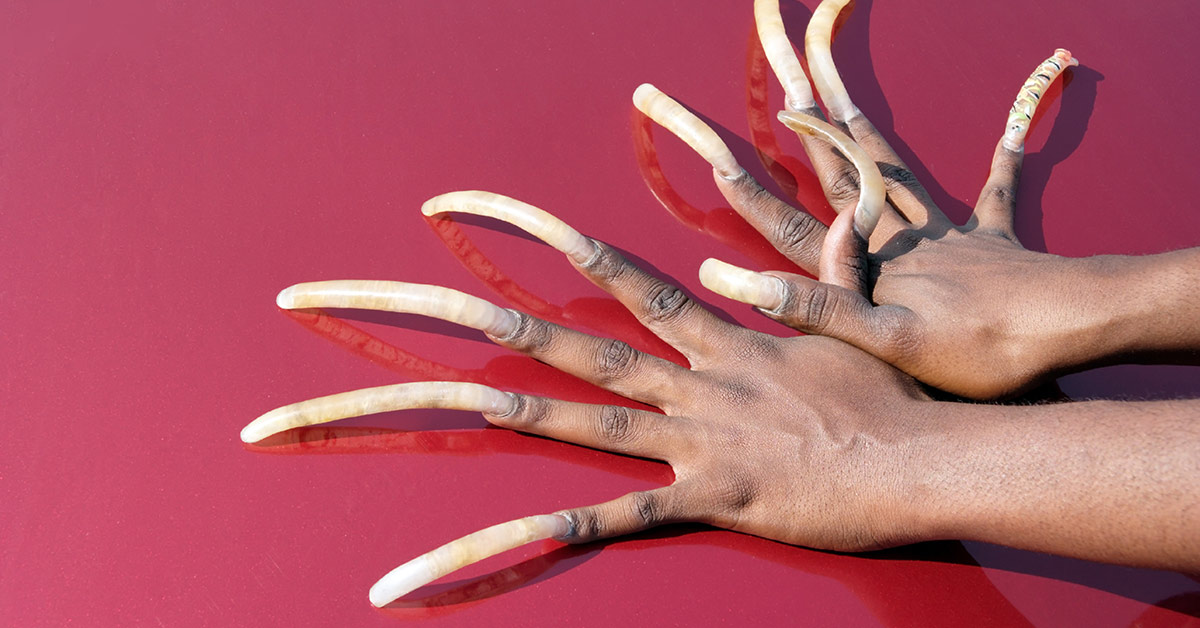What would happen if you just never cut your fingernails? Well, in brief, if you managed to never accidentally break them, they would grow very, very long. How exactly does it work, though? Another question: Would it pose a risk at all to your health? We investigated to find out.
What Happens If You Never Cut Your Fingernails?
Our fingernails grow very, very slowly – about one centimeter every three months. The speed at which they grow, how durable they are, and the length to which they are able to grow varies from person to person. Really, they’re just like hair. Some people can grow their hair very long, while others just can’t. Still, if you never trimmed them, they would simply keep on growing.
Of course, just because you don’t trim them doesn’t mean they won’t break. For most people, once their fingernails grow to a certain length, they become more brittle and break more easily. So if you decide not to trim them, they will do the job for you. (1)
How Fingernails Grow
The nail matrix lies underneath the cuticle of your fingers. This is where the fingernail originates. The cells first start as skin cells, which then transform into a tough keratin protein that is pushed forward by other forming cells behind them. This is what creates a fingernail.
There are a lot of factors that affect how quickly a nail can grow. Age, for one, affects the growth rate. Younger people’s nails grow faster, older people’s more slowly. Nails grow faster in the daytime than at night and therefore grow faster in the summer when the days are longer. Pregnancy causes nails to grow more quickly. If you damage or have any trauma to the nail they will grow faster. Trauma includes nail-biting. The nails on the middle, ring, and index finger grow faster. The slowest-growing fingernails are those of your thumbs.
Naturally, if left to grow, fingernails don’t continue to grow out straight. Eventually, they begin to curl. This leads to long, curly fingernails. The longest ever recorded were two feet and 11 inches long. To achieve this, you have to leave your fingernails uncut for many, many years.
Read: 4 Things That Cause Tonsil Stones (And How to Prevent Them)
How To Keep Strong, Healthy Fingernails
While most of us don’t aspire to have overly long nails, we do want ones that are strong, don’t break easily, and look healthy. A healthy fingernail is one that is smooth, without pits or grooves. It is also uniform in color. Nails can develop ridges as we age, which is perfectly normal. Also, if they are damaged in any way, white or dark spots will appear that will grow out over time. There are several things you can do to help strengthen and lengthen your fingernails. These include (2):
- Keeping your fingernails dry and clean.This will prevent bacteria from growing under or around the nail. Avoid repeated or prolonged contact with water. Use gloves when doing things like washing the dishes or using harsh chemicals.
- Practice good nail hygiene. When trimming, use sharp manicure scissors and nail clippers. Trim them straight across and then round out the edges.
- Rub moisturizer into your cuticles when moisturizing your hands. Don’t let them become dry and cracked.
- Apply a clear protective layer of polish. This will help strengthen and reinforce your fingernails.
- Consider a biotin supplement. There is some research to suggest that biotin may help strengthen your nails (and your skin and hair, too!).
Naturally, avoid things like nail-biting, pulling off hangnails, and harsh products. If you think there is a problem with one of your nails, don’t wait until it gets bad. Ask your doctor and resolve it immediately.
Conditions To Watch Out For
There are certain conditions that you will want to keep your eye out for. If you have them, you should seek medical attention to resolve them right away. These conditions include:
- Changes in nail color
- Dark streak under the nail or discoloration of the entire nail
- Changes in nail shape (for example, curling)
- Thinning or thickening of the nails
- Separation of the nail from the surrounding skin
- Bleeding
- Swelling or pain
- Nails that aren’t growing at all
As already mentioned, if you think you have any of these conditions, go see your doctor. They could signify other more serious problems that you will want to resolve as quickly as possible.
Keep Reading: 6 Health Benefits of Sleeping in a Cold Room and How to Make it Cooler – and Why You Might Want to Skip On a Fan
Sources
- “What would happen if I never cut my fingernails?” How Stuff Works. Laurie L. Dove.
- “Fingernails: Do’s and don’ts for healthy nails.” Mayo Clinic. Mayo Clinic Staff.

